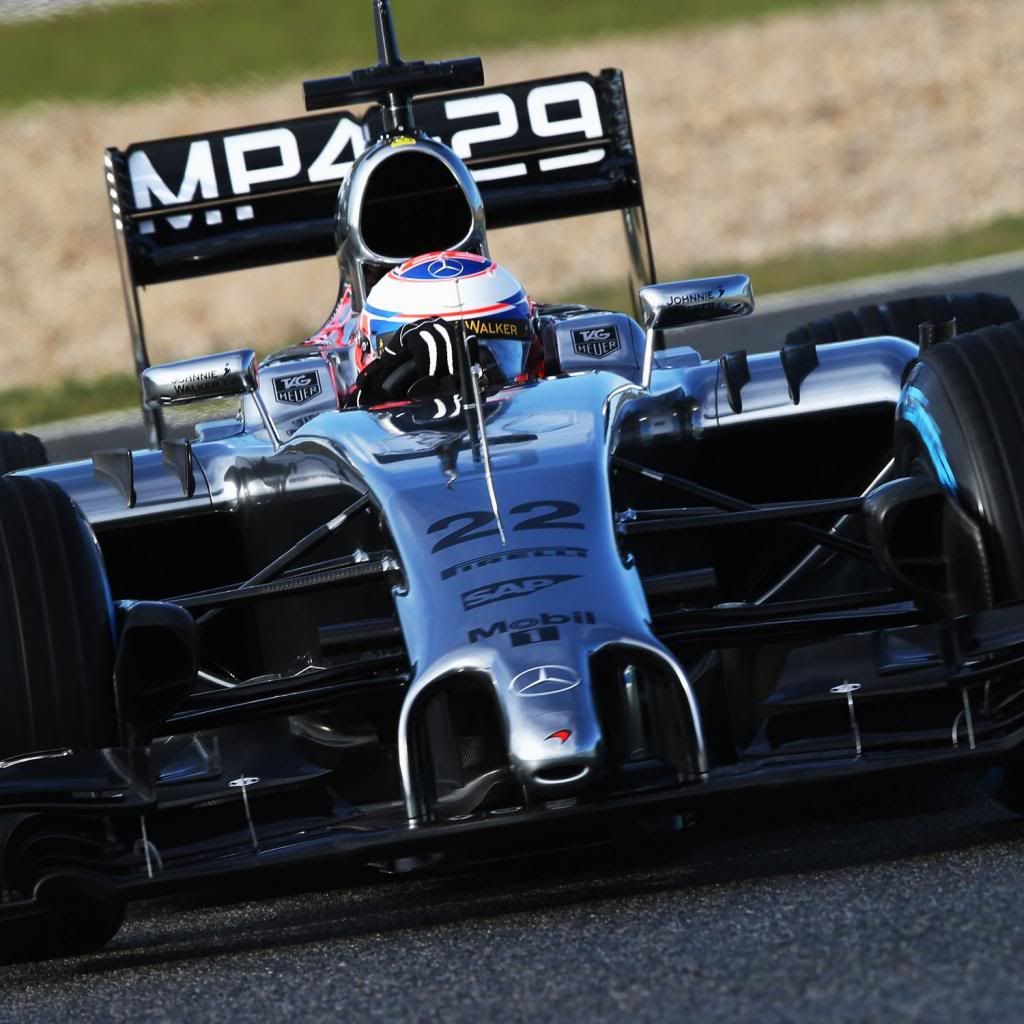Good write up scarbs. Is Red Bull running something similar?
- Login or Register
No account yet? Sign up

Teams can opt to have a few hours (4 I think) full scale wind tunnel tests instead of a days straightline testing. I'm not sure if they'd make a full model either, rather just use the actual car as the basis and maybe model some parts that aren't in production yet.n_anirudh wrote:I think its within the rules if full scale models of just the FW+ tires are tested (F1 parts/part combination)..but would not give a complete picture of the effect..shelly wrote:As marcush correctly wrote, testing tiny ducting in scale model in wind tunnel does not give reliable results. You need 1:1 testing to evaluate that.
CFD? I am not sure what kind of fludic switch they are using (if they are using any), but if it works with turbuklent transition cfd also may be erratic.

Depends. Maybe their rear wing design gives more lap time the way it is now. Maybe if you changed to a bigger flap; the downforce gain is less than the speed loss.yener wrote:If the rear wing would be bigger (or the drs flap) in terms of "catching" more air. It would also produce more DF. With a smaller one just like they used in Itally it will give them more topspeed (straightline).
Again it depends on the driver. Some drivers like Button or Webber gain confidence from a steady rear; but some like Hamilton/Vettel gain confidence from a strong frontyener wrote:The rear end is the side which is importent for the confidence of the drivers, doesnt it?.

And nor is Schumacher.MIKEY_! wrote:It all comes down to efficiency really. And balance. We know Schumacher likes a sharp front end, not sure about Rosberg but then he's not the number 1 driver.

Rosberg actually likes the car "pointy"...exactly as Schumacher. The only caveat is HOW pointy.
Sorry guys, could you describe to me a pointy car? How does it feel, when you drive a pointy car?Sorry that's what i meant, schuy likes a really pointy front. Most drivers like a sharp front end I'd say but some more than others.
Indeed, pointy implies good front grip, oversteer implies poor rear grip. The two often come together, but they don't have to.richard_leeds wrote:I'm not sure over steer is the same as "pointy".
Pointy to me means the car has a sharp front end balanced with the back so it can turn in quickly without the back end sliding out. The turning motion matches the steering input.
Oversteer is when the sharp front end turns in but the back end slides out. Hence the turning motion is greater than the steering input.
So both types result in a car that is turning tight corners, but the sliding rear ruins the back tyres. I suspect an oversteer car turning on the same radius as a "pointy" car can't get on the power as quickly because the rear doesn't have full traction?
Of course the advantage of oversteer is that it usually gives you a car that can steer tighter radius than one that remains in balance. In that case you straighten earlier and get power down earlier. That advantage compensates for rear sliding around.
I suspect that oversteer is more punishing with the Pirelli tyres as they require more intelligent use than the bomb proof, last all race with all guns blazing every lap Bridgestone tyres?
Why is it stupid? if both drivers like a pointy front end it is already logical to go that way, plus an oversteering car is easier to drive around track than an understeering oneyener wrote:Still IMO it's stupid to work for a pointy front, while the rear is shaky.
I think they will surprise us with a new rear wing on the w03.